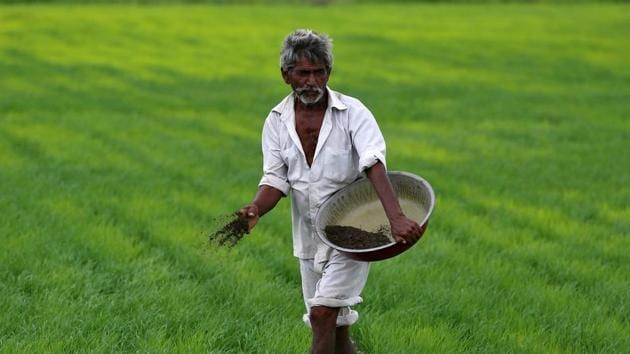Budget: Cash dole for small farmers, but experts say it may fall short
Admitting “reduced” returns in farming, the government in its interim budget on Friday announced a cash-transfer scheme for small farmers, along with a focus on non-crop sectors within agriculture.
Admitting “reduced” returns in farming, the government in its interim budget on Friday announced a cash-transfer scheme for small farmers, along with a focus on non-crop sectors within agriculture, but some critics contended that the income support scheme falls short while analysts wondered why the government waited this long to respond to a brewing rural crisis.

Finance minister Piyush Goyal said in his interim budget speech that government would roll out the Kisan Samman Nidhi (farmers’ honour endowment). Under it, small and marginal farmers will get ₹6,000 a year as income support in instalments of ₹2,000.
“I propose an outlay of ₹75,000 crore for PM-KISAN for the FY 2019-20. I am also providing ₹20,000 crore in the Revised Estimates (RE) of FY 2018-19,” Goyal said.
Nearly 120 million farmers would qualify for the income transfers.
These measures are aimed at ameliorating a lingering farm crisis due to falling prices of food. Marginal farmers are those owning up to one hectare of land, while small farmers are those with land holdings of between 1-2 hectares.
Goyal also announced a 2% interest subvention (discount on the interest rate for farmers taking agricultural loans) engaged in cattle and dairy farming and fisheries. A new department for fisheries will also be set up.
Cultivators impacted by weather shocks will qualify for an additional interest subvention (discount) of 3% if they have been repaying loans on time. Farm loans usually attract a cheaper interest rate of 7% and those making timely repayments already get loans at 4%.
“These measures will really help farmers with an assured income support,” said BJP leader Anil Baluni, a Rajya Sabha MP.
Critics, however, said the income support scheme falls short. “Income transfer is a step in the right direction, but it has to be sufficient of course and continuous. They are giving ₹6,000. This may not be sufficient,” said N Chandrasekhara Rao, an agricultural economist with Delhi University’s The Institute of Economic Growth.
This insufficiency argument is borne out by the fact that farmers will get ₹6,000 a year while the NDA government’s Volume 2 of “Report of the Committee on Doubling Farmers’ Income” released in August 2017 states that the “average monthly consumption expenditure of a farming household” is ₹6,223. Input costs, too, have risen by over a third in the last five years.
Congress president Rahul Gandhi added to the insufficient allocation argument when he tweeted that giving farmers ₹17 a day is “an insult to everything they stand and work for”.
Small-time farmers, who make up 86% of the total, are the most deprived generally. They mostly consume, not sell, what they grow since they have lower surpluses.
Rao said there is “some merit” in the argument that the interim budget ignored income support to mid-level farmers—the ones more severely affected by this spell of falling prices—because they relatively have more surpluses.
“The focus on fisheries and animal husbandry are good steps because that’s where the big inflation is,” said economist YK Alagh.
This means farmers can be better off shifting to cattle-based income because animal-based products are fetching more prices than crops.
Alagh says the budget reiterates the government’s goal of doubling of farm income but the problem is that the government still hasn’t accepted the broader measure of farming costs that includes the notional value of family labour and (unearned) rent. Alagh chaired a committee that approved this measure of cultivation cost, technically called “C2”.
“If you accept the unearned rent for industry as a measure of assumed cost, there is no logic not to use it for agriculture,” he said.
The income transfer programme will be made effective from December 1, 2018, the finance minister said.
Former finance minister P Chidambaram questioned this rationale. “I have never heard of a scheme rolled out retrospectively,” he said at a press meet.
Goyal said the fiscal deficit for the current fiscal is expected to be slightly higher at 3.4% “considering the need for income support to farmers”.




